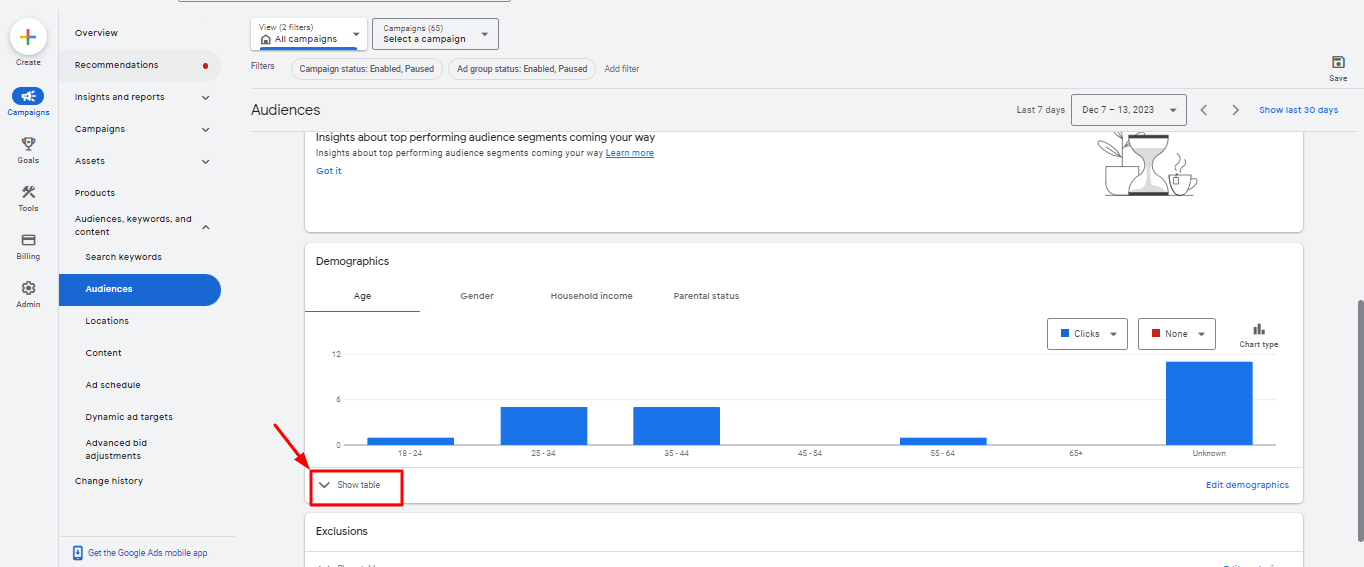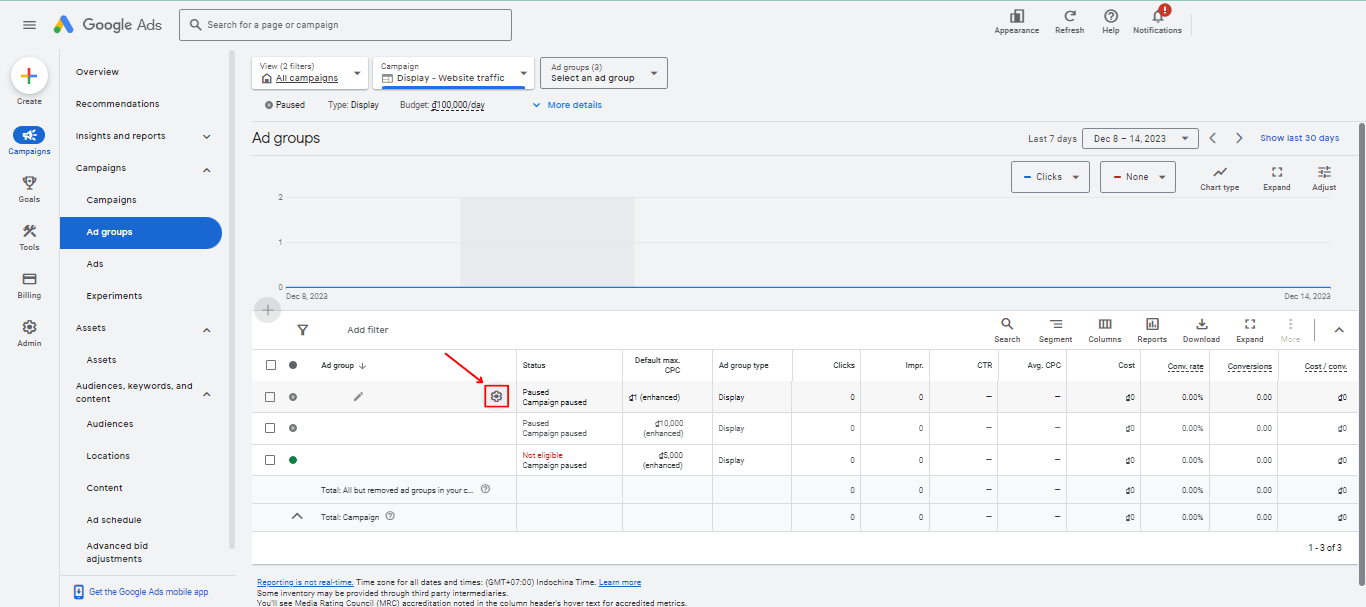In the past, advertisers relied heavily on search keywords to reach their target audiences. However, the upcoming changes to third-party cookie data will make it more difficult to use this approach. In a July 2021 update, Google Ads launched Optimized targeting, a new feature that automatically applies audience targeting to display, discovery, and video campaigns. Optimized targeting is a way for advertisers to prepare for this change and continue to reach their target audiences effectively.
So what does Google Ads optimized targeting mean? Let’s find out here!
What is Google Ads optimized targeting?
Google Ads optimized targeting is the feature launched by Google Ads that targets the audiences, beyond your target audience segments, who are likely to convert based on your real-time data. It can identify and reach audiences that you may overlooked by considering metrics such as keywords on media content (banners, logos, videos, etc.) or landing pages, combined with existing targeting goals.
Optimized targeting is now only available for several Google Ads campaigns:
- Display campaigns
- Discovery campaigns
- Video campaigns that have the Sales, Leads, or Website traffic goals
How does optimized targeting work?
Optimized targeting leverages data from your landing page and creative assets then identify the audiences aligning with your campaign goals. One special thing is that optimized targeting turns on automatically for the campaigns and you have the flexibility to turn it off whenever needed.
Furthermore, you have the option to include additional criteria referred to as targeting signals, such as audience segments or keywords, to enhance the targeting process. Whenever you add these signals, Optimized Targeting identifies similar criteria to display your ads. If optimized targeting identifies more effective traffic, it has the potential to minimize or stop the delivery of traffic based on your specified signals. For specific Google Ads campaigns, we want to recommend some targeting signals you could add on to optimize:
It’s essential to select the appropriate targeting signal. Google recommends consulting the Audience Insights report for this purpose. This report can assist you in identifying the top-performing audience segments. Google currently provides two types of audience insights: Personal and Asset audience insights.
- Personal audience insights are available for Search, Shopping, Performance Max, and Display ads
- Asset audience insights are available for Search, Performance Max, and Video ads
Advantages and disadvantages of Google Ads optimized targeting
Google Ads optimized targeting is a powerful tool designed to help advertisers reach potential customers more effectively by leveraging Google’s machine-learning capabilities. Here’s a breakdown of the advantages and disadvantages of Google Ads optimized targeting:
| Advantages | Disadvantages |
| Reach potential customers who are likely to be interested in your offer | Less control over exactly who sees their ads |
| Improve conversion rates, even outside the initially defined audience | Require a learning phase where ad performance could fluctuate |
| Reduce time and effort needed to manually find and test new target audiences | Attract irrelevant traffic with the business’s target demographic |
| Gain valuable insights into which audience segments are performing best | Might complex for small businesses or those with very niche audiences |
| Lead to more efficient use of your advertising budget by focusing on users | Might be complex for small businesses or those with very niche audiences |
Difference between optimized targeting and audience expansion
At this point, you might be thinking, “Isn’t optimized targeting the same as audience expansion? Well, they both look for more audiences to boost conversion. However, the way they work is not the same:
- Audience expansion looks for new people who are like your existing customers. Think of it as finding “twins” of the people you already reach with your ads.
- Optimized targeting goes beyond your chosen audience to find similar people who are likely to convert, based on what they do, what they like, and what they search.
In the below image, you’ll understand deeply about the differences:
When you should use Google Ads optimized targeting?
Optimized targeting will be the best-fit tool for you if you feel your targeting method at present doesn’t bring as much conversion rate as you expected. Here are the cases which you need to use Google Ads Optimized Targeting:
- Slow audience growth: Your current targeting methods aren’t delivering results fast enough, or your audience base is simply too small.
- Struggling conversions: You’re not seeing the desired conversion rate without increasing your bids or budget.
- Customer acquisition: You need help finding new customers beyond your target segments and reaching people receptive to your campaign.
- Diversified campaigns: You want to increase the reach and results of your campaign across Display, video, and Discovery platforms.
However, keep in mind that Optimized targeting operates like a learning AI, requiring time to analyze data and pinpoint high-converting audience segments:
- New campaigns: Wait until achieve 50 conversions or run for 2 weeks.
- Existing campaigns: Wait for at least 2 weeks.
Monitoring Google Ads optimized targeting
Google Ads offers the powerful feature of optimized targeting, enhancing your ads’ visibility and conversion potential. To ensure your ads are performing optimally and not draining your budget, it’s crucial to monitor their effectiveness closely. In this guide, we’ll take you through two key actions you can take to keep a vigilant eye on your Google ads and guarantee consistent high performance.
Review the performance of campaigns that use Optimized targeting
Once you’ve implemented Optimized targeting into your Google Ads campaigns, it can go either way: effective or ineffective. To assess its effectiveness, reviewing your performance is key. Here is the step-by-step guide for you to review:
In your Google Ads account, click on the Campaigns icon. Then, go to Audiences, keywords, and Content drop-down in the section menu.
After that, choose Audiences.
From the Audience segments or Demographics statistics table, tap on Show table to expand, then scroll down until you find a row labeled Total: Expansion and optimized targeting.
When evaluating your performance with optimized targeting, remember that it expands your reach to new audiences, leading to more conversions. This may cause temporary fluctuations in your average CPA as the system learns and adapts. However, over time, optimized targeting will refine your reach, leading to a more consistent CPA and maximizing your conversion potential.
Turn off optimized targeting in your Google ads
If your optimized targeting doesn’t give you the result you want, don’t get nervous, as you can always turn off the optimized targeting feature at any time by following these steps:
In your Google Ads account, choose the Campaigns. Then, go to Ad groups.
Click on the ad group Settings that you want to turn off optimized targeting for.
Choose Edit ad group targeting
Next, expand the optimized targeting section. Choose the checkbox to turn optimized targeting off.
Lastly, click on Save to keep all the changes.
Tips for monitoring optimized targeting campaigns
Monitoring the performance of your optimized targeting campaign is crucial to ensure that it is effectively reaching the right audience and driving conversions. This guide takes you through essential tips and tricks for monitoring your campaign’s performance and maximizing its impact.
- Define measurable KPIs: Ensure your chosen KPIs are directly linked to your campaign’s objectives and serve as reliable indicators of progress toward achieving those goals. For instance, if boosting website traffic is your primary aim, actively track metrics like clicks, impressions, and click-through rate for insightful analysis.
- Conduct A/B testing: A/B testing empowers you to experiment with various targeting options, ad copy, and visuals, allowing you to identify the combination that sparks the most engagement and conversions.
- Interpret metrics on optimized targeting: Within the “Audiences” tab, generate a chart showcasing the click-through rate specifically for audiences reached through this feature. For a more holistic view, delve into the individual audience segment tables, where you’ll find detailed metrics on optimized targeting performance at the bottom.
- Use analytics tools: An analytics tool offers invaluable insights into the effectiveness of your optimized targeting campaign. By tracking user behavior, website traffic, and conversion rates, it helps you differentiate between successful tactics and those requiring refinement.
Additionally, think about running various campaigns with different goals to find out which ones work best for your business. Doing this also enables you to optimize their effectiveness when placing them in the right locations. NestAds was created to simplify the process of managing all your ad tracking data. You can handle all your ads just from one dashboard and gain more detailed insights into your ad performance by tracking important ad metrics.
Don’t let optimization anxiety hinder your progress. NestAds can help you confidently refine your Google Ads targeting for explosive growth!
FAQs
Is Google Ads optimized targeting suitable for me?
Yes, if you’re aiming for specific outcomes like lowering your CPC or boosting your ROI. Optimized targeting leverages Google Ads to pinpoint the most effective audiences and regions for your campaigns, aligning with your targeted goals.
How to check if audience expansion is enabled?
To check if audience expansion is turned on for your campaign, follow these steps:
- Navigate to the Audiences section within any ad group of your campaign.
- Look for the option labeled Edit audience segments.
Here, if audience expansion is enabled, you will notice an indication of the audience size that extends beyond your initially selected segments. This size increment signals that Google’s algorithm is actively seeking and adding similar users to your target audience pool.




























































